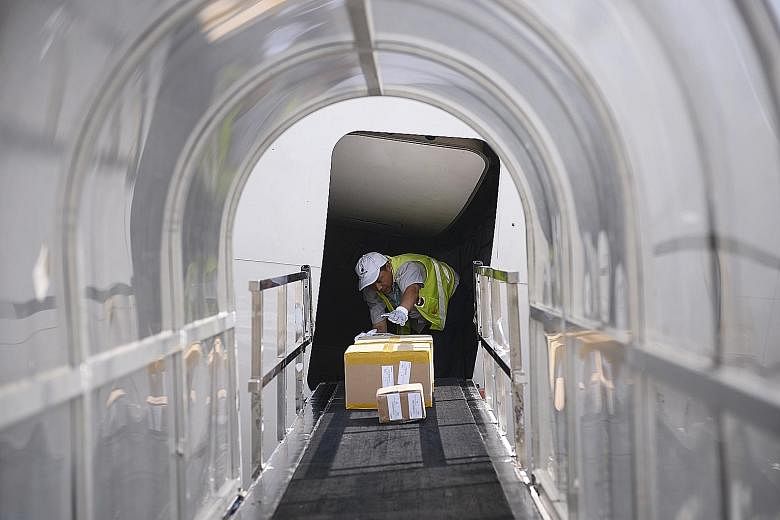The global air cargo market showed steady growth in demand at the start of this year, according to new data from the International Air Transport Association (Iata) .
Demand, measured in freight tonne kilometres, rose 6.9 per cent in January from a year earlier. This was down from the 10 per cent annual growth recorded last December, but it was still well above the average annual growth rate of 3 per cent over the past five years, Iata said.
Growth in air freight capacity slowed to 3.5 per cent in January. The continued positive momentum in air cargo growth into 2017 coincides with a steady rise in new export orders, which reached their highest level in February, the latest data available, since March 2011.
Iata noted that there has also been an increase in the shipment of silicon materials typically used in high-value consumer electronics shipped by air. The timing of the Chinese New Year in January also may have contributed to higher demand that month.
Iata's director-general and chief executive Alexandre de Juniac said: "It's been a good start to the year for air cargo. Demand growth accelerated in January, bolstered by strengthening export orders. And that outpaced the capacity growth which should be positive for yields.
"And, longer term, the entry into force of the Trade Facilitation Agreement will cut red tape at the borders for faster, cheaper and easier trade. The onus is now on the industry to seize the opportunity to accelerate the modernisation of processes to make air cargo an even more compelling option for shippers."
All regions, with the exception of Latin America, reported an increase in air freight demand in January, said Iata.
Asia-Pacific airlines saw freight volumes rise 6 per cent year on year and capacity increase by 6.6 per cent. Seasonally adjusted volumes were up considerably since early last year and are now back to the levels reached in 2010 during the post-global financial crisis bounce-back. The increase in Asia-Pacific demand is captured in the positive outlook from business surveys in the region, said Iata.
China's purchasing managers' index (PMI) for February has risen to a 21-month high, Japan's PMI to a 36-month high, while Taiwan, South Korea and Vietnam also reported increases in new export orders. North American airlines' freight volumes expanded 6.1 per cent in January year on year, as capacity edged up 0.6 per cent. International freight volumes grew by 8.7 per cent - their fastest pace since the US seaports disruption boosted demand in February 2015.
Iata said the strength of the US dollar continued to pump up the inbound market but kept the export market under pressure. European airlines posted an 8.7 per cent increase in freight volumes while capacity rose 3.3 per cent. The strong European performance corresponds with an increase in reported new export orders, particularly in Germany over the last few months, said Iata.


